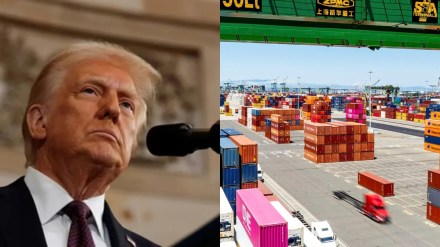With only hours remaining before a self‑imposed trade deadline of August 1, the White House formally announced a sweeping new global tariff policy late on July 31. Despite earlier plans to implement before midnight, the administration delayed effective duties to August 7, giving Customs and Border Protection time to adapt systems.
April 2 exemptions to remain in place
Under the newly signed executive order, imports from countries with which the United States runs a trade surplus will face a universal 10% tariff, a continuation of the baseline rate introduced in April’s “Liberation Day” policy. However, in contrast to that, countries running a trade deficit with the US will now face a minimum tariff of 15%. This trade policy now applies to more than 70 nations.
Meanwhile, the White House confirmed that under Executive Order 14257, tariffs announced on April 2 stay effective. Also, tariffs on copper, pharma, auto components, and metals stay exempted from reciprocal tariffs.
Country-specific tariffs: Who faces how much?
A subset of countries, those that have deep trade imbalances or lack meaningful trade deals, will be subject to tariffs well above the 15% floor. These country‑specific rates span from 20% up to 41%, depending on bilateral relations and deficits. Notable examples include:
Syria: Tariff is highest at 41%
Laos and Myanmar: 40%
Switzerland: 39%
Iraq and Serbia: 35%
South Africa, Libya, Bosnia & Herzegovina, and Algeria: Tariff is around 30%
Meanwhile, key trading nations saw significant tariff adjustments:
Tariff on India: India now faces 25% tariffs on its exports to the US under the new reciprocal framework. A senior US official, as quoted by BBC, acknowledged that trade disputes with India won’t be solved overnight, citing deep and complex issues, including India’s continued reliance on Russian oil and military equipment and its BRICS membership despite ongoing negotiations. The US has announced a 25% tariff on Indian goods effective August 1, along with unspecified penalties tied to geopolitical concerns. The official emphasised that enduring resolution will take time and nuanced diplomacy.
Tariff on Canadian goods: Canada’s rate has risen sharply from 25% to 35%, specifically targeting goods outside USMCA compliance. Attempts at transshipment via third countries will trigger 40% duties. However, goods compliant with the United States–Mexico–Canada Agreement (USMCA) are exempt from the higher tariffs imposed on Canadian goods, significantly mitigating their impact. Canada remained the top buyer of US exports in 2024, with $349.4 billion exported to Canada, while Canada shipped $412.7 billion worth of goods to the US, making it the third-largest supplier.
Taiwan and Vietnam: The tariff is newly set at 20%.
Japan and South Korea: Tariff down to 15%, as a result of recent bilateral agreements.
The UK and the EU are among those who were successful in forging a deal with the US.
Pakistan wins lowest US tariff in South Asia, rate slashed to 19%: Pakistan has secured the lowest US tariff rate among South Asian countries, following a new trade deal announced on 31 July. Its levy was reduced from 29% to just 19%, prompting praise from Islamabad. Prime Minister Shehbaz Sharif expressed “profound thanks” to President Trump. Pakistan simultaneously rolled back a recent 5% digital services tax, seen as a goodwill gesture. With the US as its largest textile market, accounting for some 60% of exports, the lower tariff is poised to boost its textile sector.
Countries whose tariffs changed since Trump’s April 2 announcement
- Angola: 32% to 15%
- Bangladesh: 37% to 20%
- Bosnia and Herzegovina: 35% to 30%
- Botswana: 37% to 15%
- Brunei: 24% to 25%
- Cambodia: 49% to 19%
- Cameroon: 11% to 15%
- Chad: 13% to 15%
- Côte d`Ivoire: 21% to 15%
- Democratic Republic of the Congo: 11% to 15%
- Equatorial Guinea: 13% to 15%
- European Union: 20% to 15% (for most goods)
- Falkland Islands: 41% to 10%
- Fiji: 32% to 15%
- Guyana: 38% to 15%
- India: 26% to 25%
- Indonesia: 32% to 19%
- Iraq: 39% to 35%
- Israel: 17% to 15%
- Japan: 24% to 15%
- Jordan: 20% to 15%
- Kazakhstan: 27% to 25%
- Laos: 48% to 40%
- Lesotho: 50% to 15%
- Libya: 31% to 30%
- Leichtenstein: 37% to 15%
- Madagascar: 47% to 15%
- Malawi: 17% to 15%
- Malaysia: 24% to 19%
- Mauritius: 40% to 15%
- Moldova: 31% to 25%
- Mozambique: 16% to 15%
- Myanmar: 44% to 40%
- Namibia: 21% to 15%
- Nauru: 30% to 15%
- Nigeria: 14% to 15%
- North Macedonia: 33% to 15%
- Pakistan: 29% to 19%
- Philippines: 17% to 19%
- Serbia: 37% to 35%
- South Korea: 30% to 15%
- Sri Lanka: 44% to 20%
- Switzerland: 31% to 39%
- Taiwan: 32% to 20%
- Thailand: 36% to 19%
- Tunisia: 28% to 25%
- Vanuatu: 22% to 15%
- Vietnam: 46% to 20%
- Zambia: 17% to 15%
- Zimbabwe: 18% to 15%
When does the tariff come into effect?
Although the order was dated 31 July, the tariffs will begin August 7, allowing importers time to prepare. Shipments loaded by August 7 or already in transit before entry into the US by October 5 are exempt from the new rates. However, the 35% tariff on Canada will come into effect in just a few hours, on 1 August.
